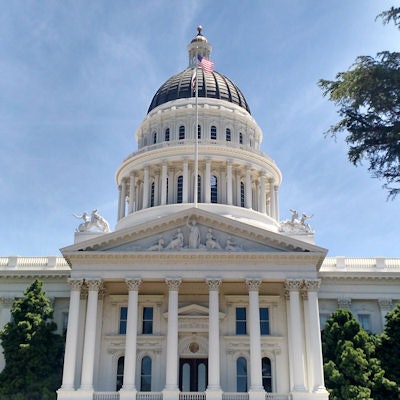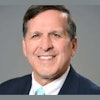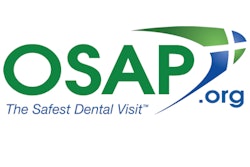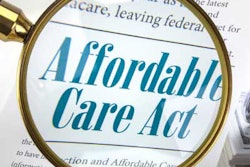
Oral health experts and key policymakers met in Sacramento to discuss the state of oral health in California on May 17. There was a general consensus that the way dental care is financed and delivered needs to be innovated.
The forum was organized by the journal Health Affairs and included panelists from the ADA Health Policy Institute, Pew Charitable Trusts, and multiple California dental schools. Several policymakers instrumental in shaping oral health policy were in attendance, including California's state dental director, Jayanth Kumar, DDS, MPH.
The idea behind the two-and-a-half hour forum was to discuss ways to move from research findings into action. By highlighting their own research and personal experiences, the panelists illustrated why it is vital for the industry to innovate how dental care is financed and delivered, both for private and public systems.
"We have a pretty byzantine system of dental financing in this system in my view," said Marko Vujicic, PhD, chief health economist and vice president at the ADA's Health Policy Institute. "We need to redesign a system that actually finances to get those outcomes."
 The second group of panelists discussed the oral health safety net. From left to right: Alan Weil, JD (standing); Paul Glassman, DDS, MBA; James Crall, DDS, ScD; Karen Becerra, DDS, MPH; and Laura Marcus.
The second group of panelists discussed the oral health safety net. From left to right: Alan Weil, JD (standing); Paul Glassman, DDS, MBA; James Crall, DDS, ScD; Karen Becerra, DDS, MPH; and Laura Marcus.The panelists focused on four problem areas influencing the state of oral health in California and some of the solutions proposed to solve them.
1. The dental-medical divide
Dentistry is separated from medicine on almost all fronts, according to Elizabeth Mertz, PhD, an associate professor at the University of California, San Francisco (UCSF) School of Dentistry. The divide includes education, insurance design and administration, policy design at the state and federal levels, scientific research, and the technological infrastructure used by practices.
The consequences of the divide manifest themselves in several ways. For instance, it can be difficult to share records and information between medical and dental practices, even in health centers that have both dental and medical facilities. Or, patients who have medical insurance but not dental insurance may rely on the emergency department to treat dental pain and conditions.
Karen Becerra, DDS, MPH, CEO and dental director of the Gary and Mary West Senior Dental Center in San Diego, has witnessed firsthand some of these problems. Her clinic relies on electronic health records, but the system software she uses is different from those of medical offices.
The question then becomes how to better integrate the two systems. A care navigator is one solution, according to Dr. Becerra.
"We're going to be living in our own silos, so we talk to the care navigator. But our ultimate goal is to make it easier," she said.
Laura Marcus, executive director of Dientes Community Dental Care in Santa Cruz County, has witnessed a similar problem.
"I didn't realize how complex integration would be, and I'm just talking about the technology requirements," she said.
Marcus suggested, though, that integration needs to start at the top, with medical directors talking with dental directors about how to create a system that works for both sides of the divide.
2. Outdated insurance design
The panelists suggested that current insurance models may be failing some patients, and there is a need to innovate the financing model. When discussing his research, Vujicic said that even high-income adults and adults with both private medical and dental insurance report cost as the No. 1 barrier to accessing dental care. In addition, he found the vast majority of patients may actually be financially better off not buying insurance at all.
 Marko Vujicic, PhD, chief economist and vice president of the ADA Health Policy Institute. Image courtesy of the ADA.
Marko Vujicic, PhD, chief economist and vice president of the ADA Health Policy Institute. Image courtesy of the ADA."The No. 1 reason people report that they don't access dental care is cost. This is true in every state we've studied. It's true in California ... It's true among low-income, middle-income, and high-income adults," he said. "This suggests to me that something isn't working in the dental insurance model."
While Vujicic noted that the data are neither good nor bad, he does believe there is a need for innovation and experimentation when it comes to covering and delivering dental care, and dental insurance needs to be redrawn.
"From my perspective, it starts with incentivizing outcomes, however you want to do that," he said. "The actual design of the benefit is completely outdated, and unless we take over that and start paying for outcomes, we're not going to get far."
Jane Koppelman, research director of the Pew Charitable Trusts' dental campaign, agreed with Vujicic, saying that it was only after Oregon incentivized sealants for school-aged children that insurers started school sealant programs.
"The plans acknowledge that, 'We would have never gotten into schools. But now we get a few million dollar benefit,' " Koppelman said.
3. Poor distribution of dentists
More than 50 million people in the U.S. live in a dental health provider shortage area, a designation by the U.S. Health Resources and Services Administration that a geographic area, population, or facility has too few dental health providers and services. One of the more common explanations for the lack of providers in some areas is that there is a shortage of dentists overall. However, Mertz, the associate professor from UCSF, isn't satisfied with that explanation. Instead, she thinks the problem is a maldistribution of dentists.
"My opinion is that we have plenty of dentists," she said. "It's not a warm-body problem. It's a system-design problem."
 Paul Glassman, DDS, MBA, professor at the University of Pacific Arthur A. Dugoni School of Dentistry.
Paul Glassman, DDS, MBA, professor at the University of Pacific Arthur A. Dugoni School of Dentistry.Private practice dentists need to practice in higher-income areas, she said, meaning that model may be unable to function in some of these shortage areas. Panelists mentioned that tight incomes coupled with a lack of transportation options can make getting to an existing dental office difficult for many people. Instead, there was a consensus that care needs to be brought to where people are.
The virtual dental home could be one solution, said Paul Glassman, DDS, MBA, a professor at the University of Pacific Arthur A. Dugoni School of Dentistry. The virtual dental home concept allows existing dental personnel to meet with high-risk patients, and then have a dentist review records offsite. For example, a dental hygienist can be part of a school for the entire year, performing cleanings and checkups and increasing awareness of oral health.
The University of Pacific has been testing this model for about a decade, and the results are positive, Dr. Glassman said. High-risk patients have been able to maintain their oral health by only physically seeing a dental hygienist.
 Jane Koppelman, research director of the Pew Charitable Trusts' dental campaign. Image courtesy of the Pew Charitable Trusts.
Jane Koppelman, research director of the Pew Charitable Trusts' dental campaign. Image courtesy of the Pew Charitable Trusts.However, dental therapists or midlevel providers were another solution proposed by several panelists, including Koppelman, who touted success stories of dental therapists in Minnesota and Alaska.
In Alaska, the dental therapy model trains people already living in provider shortage areas who want to continue living and working there, according to Koppelman. Private dentists in Minnesota have had positive experience with dental therapists as well, she added.
Several panelists also mentioned that dental therapists could be beneficial, in particular, in schools, nursing homes, and homes for people with disabilities.
"In California, you've got one-third of your population on Medicaid, and about 25% of your dentists accept Medicaid," Koppelman said. "A type of provider that is low-cost and nimble would be beneficial in a context like that."
4. Few dentists accept Medicaid
When discussing access-to-care problems, it's hard not to mention that the majority of dentists in California don't accept patients enrolled in Denti-Cal, the state's dental Medicaid program.
In fact, before she opened her San Diego clinic, Dr. Becerra struggled to find dentists who would accept Denti-Cal, and the clinic was often far away when she did find one. For low-income seniors, even an extra bus ride might be unaffordable, resulting in a canceled or no-show appointment.
When asked why they don't participate in Denti-Cal, many dentists cite cumbersome paperwork, people who don't show up to appointments, and, most important, low reimbursement rates.
"The rates of the Denti-Cal program are so low that even a nonprofit is having difficulty working with them," Dr. Becerra said. She also noted the no-show rate for her clinic is less than 5%, which she attributes to being in an area where a lot of low-income seniors live.
Anthony Wright, executive director of Health Access California, said that, if policymakers want dentists to participate in the program, they have to raise reimbursement rates. That may be possible now that a tax on tobacco has provided California with an additional $1 billion for Medicaid, and policymakers are discussing using some of that money to raise reimbursement rates, according to Wright.
However, he also mentioned that any large, national healthcare changes may derail California's Medicaid policy plans.
"It's a lot easier to do this when there's new money coming into the system ... [but] there's the threat of money going away," Wright said. "We're having two different conversations going in opposite directions at the national level and in California."



















